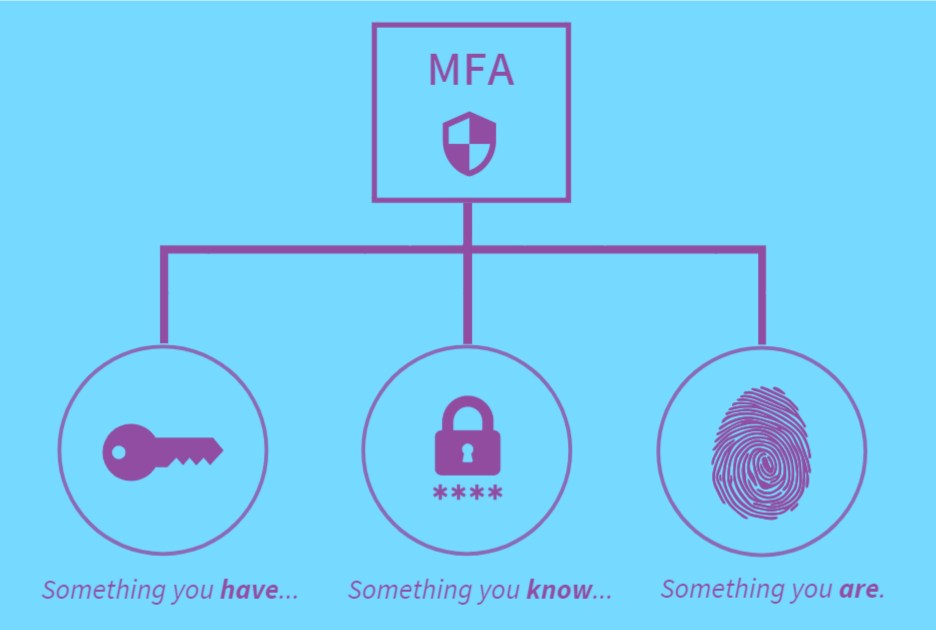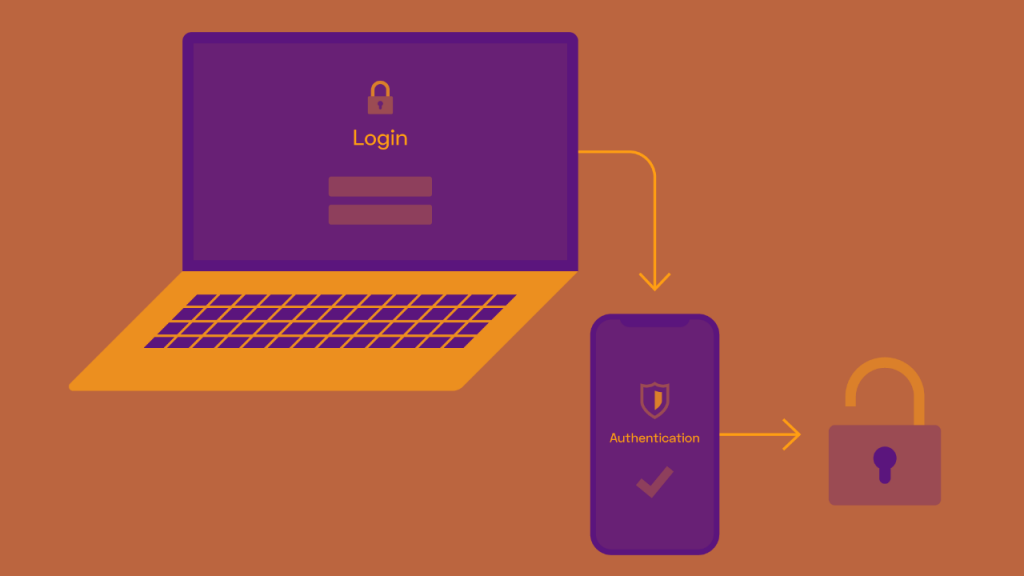Yes, that’s right. You probably used the same password for multiple websites. And if that password ever gets stolen by hackers, they could have access to all of your sensitive data. You can take a simple action to prevent 99.9% of attacks on your accounts, it’s called two-factor authentication.
So why isn’t everyone using two-factor authentication? Probably because they don’t understand how it works
- Types of Two-Factor Authentication
- How Does Two-Factor Authentication Work?
- How Secure is Two-Factor Authentication?
- Two-Factor Authentication Best Practices
What Types Two-Factor Authentication Are There?
Two-factor authentication is the very best way to keep your accounts safe and secure.
There are three types of two-factor authentication.
- The account holder should only know additional login details, such as security question answers and further PIN numbers.
- Devices the account holder owns a device that receives additional login credentials, such as a security token or pin on a mobile phone app
- Biometrics, these login credentials are unique to the account owner, like retina scans and fingerprints. Fingerprint authentication is often carried out using mobile phones with built-in fingerprint scanners.
The best 2FA method for you depends on what company and how much hassle it would be to secure your devices. Device owners may prefer biometric methods, while companies often choose the device-based approach because they can track when a user authenticates themselves with their fingerprint or passcode rather than having users manage separate passwords for every account in use (which could lead some people to become lazy).

How Does Two-Factor Authentication Work?
Here’s an example of what adding 2FA to an account looks like for the methods described above.
1. Text Message
Text message 2FA is the most common type of 2FA. A login code is sent to your mobile device as a text message with this method. This is a very streamlined way of completing 2FA, and all you need is a cellphone and a connection to a cellular network.
However, text message 2FA is not without its risks. There is a possibility that someone could impersonate you to the phone company, hijack your phone, and gain unauthorized access.
Text message authentication does have the added downside if you have no cellular signal, you will not be able to access your code and thus log into your device.
2. Authentication Applications
2FA Authentication apps work by using a mobile app to generate an authentication code you then enter this code to gain access into your account.
This authentication method is different from text messages because you don’t always need access to a wireless network. Therefore, you can use any internet connection to get into your account.
If you can’t get access to the internet, Google, for example, offers backup codes to use in case of connectivity problems.
Common authentication applications include:
3. Biometric Two-factor Authentication
Biometric two-factor authentication works by verifying your identity using something unique to your physical person. For example, standard biometric verification methods include retina scans by your computer’s camera or a requirement to use your fingerprint on your tablet or mobile phone.
The most common limitations to the methods discussed are their fear of biometric data theft. For example, a hacker stealing biometric data has a considerable downside. You can’t reset your fingerprints and eye and face biometrics. This means your biometric data can be taken for life, though luckily, we have eight fingers and two thumbs to choose to default to if one of your fingerprints gets compromised.
How Secure is Two-Factor Authentication?
Two-factor authentication is a great way to increase your security when logging into an account, but it is not entirely safe.
Text Message 2FA Security
Security flaws in text message 2FA can leave users vulnerable to hackers. One of the most important security flaws is the ability of users to keep their mobile phone numbers even when they switch providers. Mobile number portability opens for hackers to impersonate you and change your number to a phone they control. If this happens, your usernames and passwords will give hackers access to your accounts.
Authentication Applications 2FA Security
Two-factor authentication is a cybersecurity measure used to protect against unauthorized access to accounts. However, authentication apps and security tokens are vulnerable to theft and hacking. For example, Google Authenticator can be stolen if your device is left unattended, and security tokens can be hacked at the manufacturer level. This is what happened to customers of RSA Security’s “SecurID” tokens after a breach leaked sensitive information to hackers.
Biometric 2FA Security
The reality is that biometric security is not foolproof. Hackers can access accounts even with biometric authentication enabled like any other security method. Indeed, a hacker isn’t going to remove your finger (or retina) to gain access to your network, but these security systems are not magic. Instead, they must store a digital representation of your fingerprint/retina to work, which can be hacked, however unlikely that may be.

Two-Factor Authentication Best Practices
Two-factor authentication is a simple but effective way to add an extra layer of security to your online accounts. However, it’s important to remember that 2FA is not foolproof. 2FA is a great way to make sure you never relapse. But don’t just use 2-step authentication. Instead, go beyond that and follow these best practices for added security:
1. Don’t use your personal phone number for text 2FA authentication.
Hackers can often trick phone carriers into changing account details by using clever tricks. Instead, set up a dedicated Google Voice number so you can always keep it, and the carrier cannot change this for any reason
2. Don’t use email-based account resets.
There are many different ways to reset your account to regain access. However, some methods are more secure than others. For example, email-based account resets, while convenient, are often less secure than other methods. This is because they can be easily bypassed with just a username and password if a hacker knows what they’re doing.
3. Use a combination of authentication methods.
You can make your cybersecurity stronger by using a combination of verification methods. Two-factor authentication is one way to do this, and it’s one of the most effective methods for protecting your data. By using multiple 2FA methods, you can keep your information even safer.
Two-factor authentication is an essential cybersecurity measure implemented on every eCommerce site. If you don’t have it in place, your staff can easily get hacked and impersonated by a fraudster posing as them to gain access to your businesses network and steal critical information. Adding this layer of protection will protect your business from financial loss and the customer who buys and use your products and services.
Contact us today if you like to improve cybersecurity and incorporate two-factor authentication into your business.




